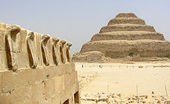OF THE
TIMES
And it didn't really make any difference.
Amazing how two rooted complicit & corrupt underground Terrorist entities never seem to be able to find any wrongdoing by them ever. 🤡💩🎪
He’s such an amazing & clairvoyant person that Director Wray is. 🤡💩🎪
Lmao - my surprised look ;) +1
Of specific note regarding the prima facie evidence in this case; George Alan Kelly trial targets his rifle, but deadly bullet missing [Link] 🤡💩🎪...
To submit an article for publication, see our Submission Guidelines
Reader comments do not necessarily reflect the views of the volunteers, editors, and directors of SOTT.net or the Quantum Future Group.
Some icons on this site were created by: Afterglow, Aha-Soft, AntialiasFactory, artdesigner.lv, Artura, DailyOverview, Everaldo, GraphicsFuel, IconFactory, Iconka, IconShock, Icons-Land, i-love-icons, KDE-look.org, Klukeart, mugenb16, Map Icons Collection, PetshopBoxStudio, VisualPharm, wbeiruti, WebIconset
Powered by PikaJS 🐁 and In·Site
Original content © 2002-2024 by Sott.net/Signs of the Times. See: FAIR USE NOTICE

Reader Comments
to our Newsletter